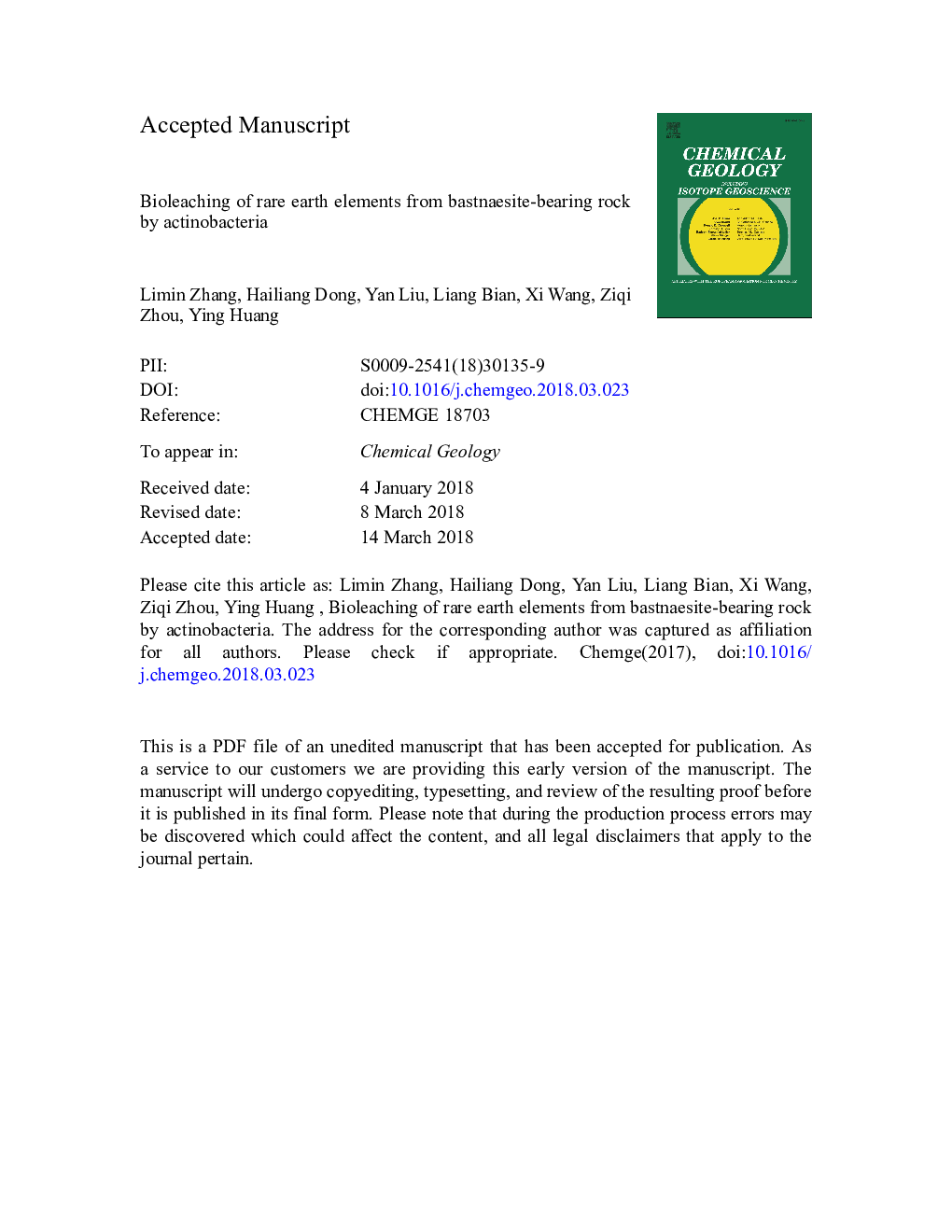| کد مقاله | کد نشریه | سال انتشار | مقاله انگلیسی | نسخه تمام متن |
|---|---|---|---|---|
| 8910310 | 1637491 | 2018 | 48 صفحه PDF | دانلود رایگان |
عنوان انگلیسی مقاله ISI
Bioleaching of rare earth elements from bastnaesite-bearing rock by actinobacteria
ترجمه فارسی عنوان
از بین بردن عناصر خاکی کمیاب از سنگ باستنئیزیت توسط آتیین باکتریایی
دانلود مقاله + سفارش ترجمه
دانلود مقاله ISI انگلیسی
رایگان برای ایرانیان
کلمات کلیدی
موضوعات مرتبط
مهندسی و علوم پایه
علوم زمین و سیارات
ژئوشیمی و پترولوژی
چکیده انگلیسی
Biological leaching of rare earth elements (REEs) from low-grade ores and mine tailings represents a potentially cost-effective green technology for REE recovery, yet the specific mechanisms of such biological process, especially by common rock-dwelling actinobacteria, remain unclear. In this study, we performed laboratory bioleaching experiments to understand the rates and mechanisms of REE bioleaching. Four actinobacterial strains, including two isolates from REE-rich rocks and two from surrounding red soil, were found to have the capability of bioleaching REEs from a bastnaesite-bearing rock and bastnaesite. Bastnaesite is one member of a REE mineral family REE(CO3)F, where REE is dominated by Ce, La or Y. In a nutrient-rich growth medium, bioleached total REE concentration ranged from 56 to 342â¯Î¼g/L. In an oligotrophic medium, only one strain (Streptomyces sp.) grew in the presence of the bastnaesite-bearing rock and bastnaesite, and leached as much as 548â¯Î¼g/L total REEs. The leaching efficiency of total REEs, defined as the amounts of leached REEs relative those present in the rock was 0.008-0.08%, which should be underestimated due to new REE-bearing mineral precipitation and/or sorption of leached REEs to residual rock and cell surfaces. These bioleached REE concentrations were higher than those leached by abiotic methods under a similar pH condition, suggesting that pH was not the only factor in REE bioleaching. Additional experiments demonstrated that these four actinobacterial strains secreted various organic acids, complexing ligands, and siderophores as dominant agents to extract REEs from bastnaesite-bearing rock. Some of the leached REEs were observed to accumulate on cell surfaces. Multiple lines of evidence suggest that REEs were leached primarily from primary REE mineral bastnaesite. Our results suggest that microorganisms have a potential to selectively bioleach and recover certain REEs from low-grade ores and mine tailings.
ناشر
Database: Elsevier - ScienceDirect (ساینس دایرکت)
Journal: Chemical Geology - Volume 483, 20 April 2018, Pages 544-557
Journal: Chemical Geology - Volume 483, 20 April 2018, Pages 544-557
نویسندگان
Limin Zhang, Hailiang Dong, Yan Liu, Liang Bian, Xi Wang, Ziqi Zhou, Ying Huang,
